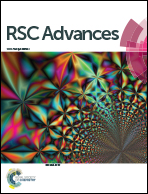The effect of organomodified ZnAl LDH for in situ synthesis and the properties of poly(ethylene terephthalate) nanocomposites
Abstract
Poly(ethylene terephthalate)-layered double hydroxide (PET–LDH) composites were prepared by intercalation, followed by in situ polymerization. To enhance the compatibility between PET and the modified LDH, the sodium salt of sulfanilic acid (SAS) had been previously intercalated in the LDH. X-ray diffraction (XRD) and transmission electron microscopy (TEM) were used to detect the degree of dispersion of the filler and the type of the polymeric composites obtained. As identified by differential scanning calorimetry (DSC) and thermogravimetric (TGA) analysis, the crystallization rate and the thermal degradation temperature of the as-prepared PET nanocomposites sample were enhanced compared with the pristine PET sample. The results indicated that the modified ZnAl LDH-SAS improves the interlayer compatibility between the PET and ZnAl LDH-SAS layers, thus making it easier for the oligomer to enter the gallery of ZnAl LDH-SAS layers. Hence, polymer chains can be intercalated between the LDH layers during the polymerization of the polymer matrix. The gas barriers and mechanical properties of these new types of PET nanocomposites were investigated.


 Please wait while we load your content...
Please wait while we load your content...